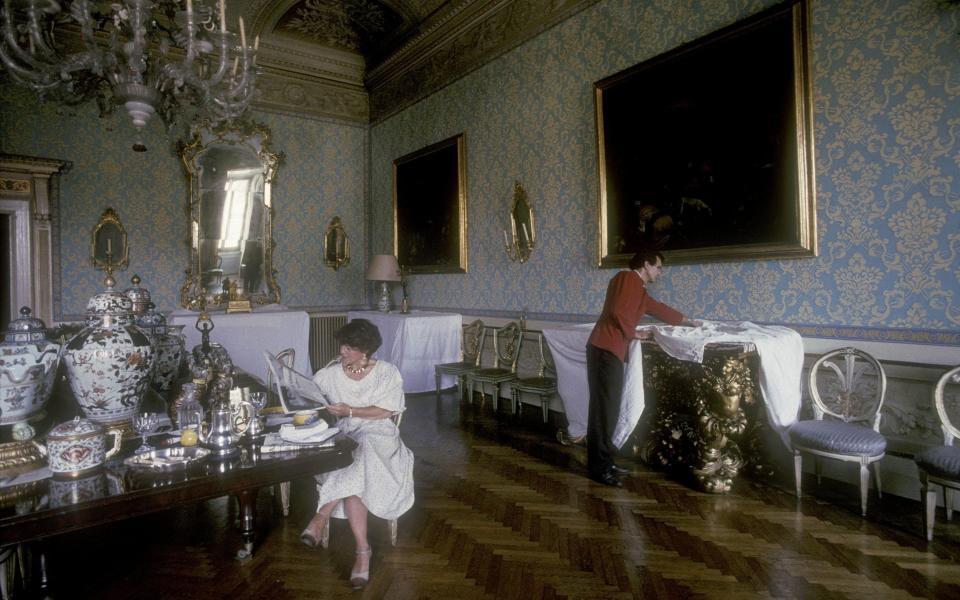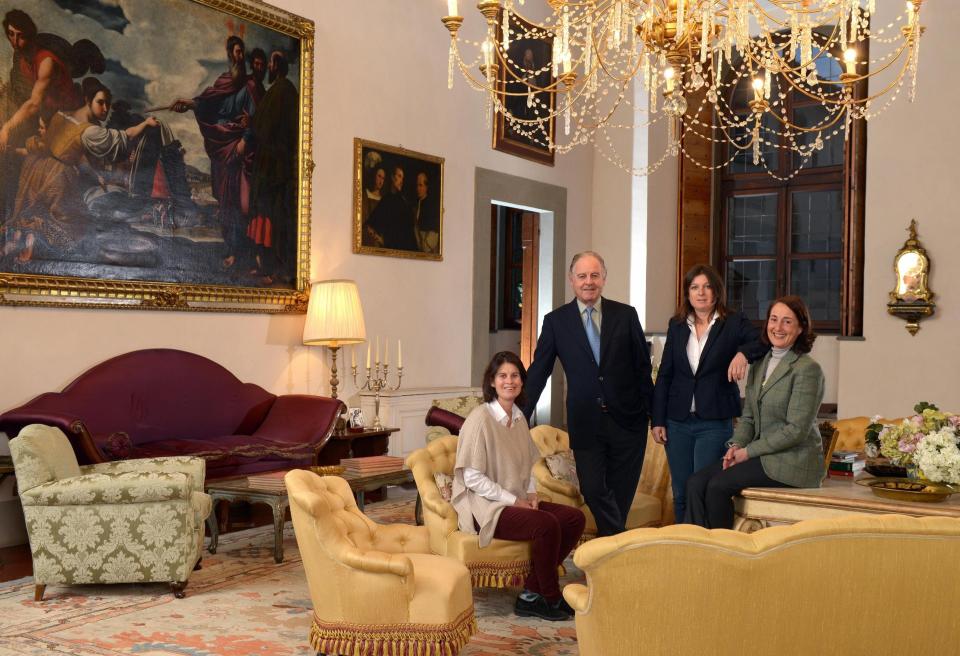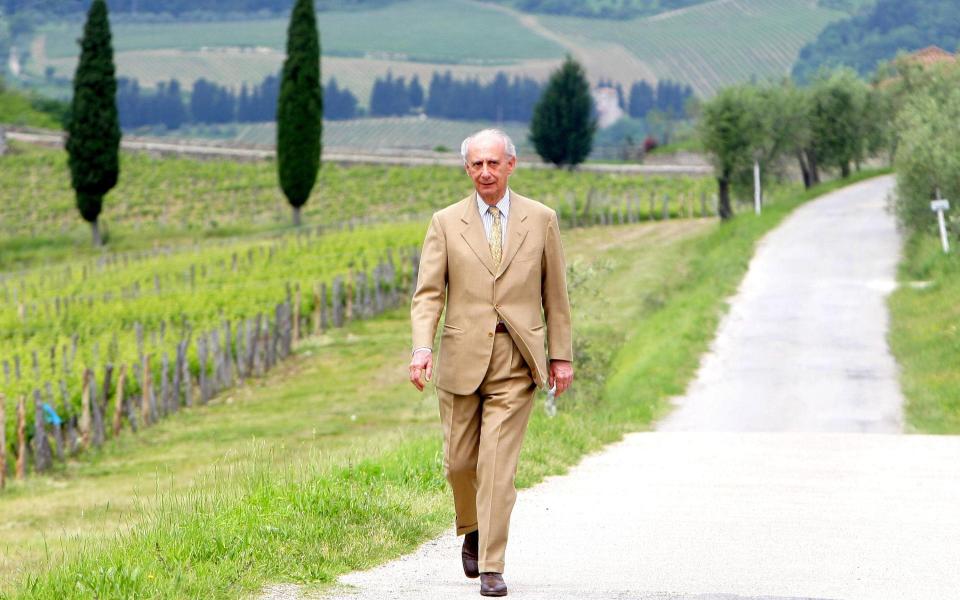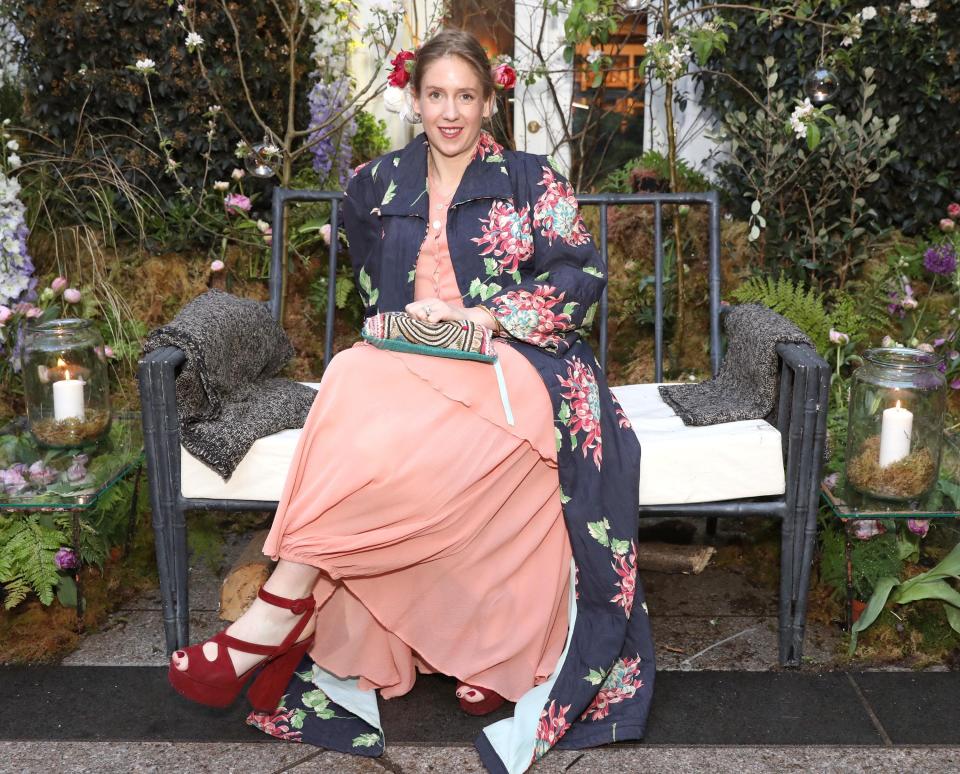Princess Beatrice has married a count - but who are the feuding Italian nobility?

With a name as exotic as Count Edoardo Mapelli Mozzi, the newest addition to the Royal family sounds as noble as the crumbling palazzos of Venice. But in truth, Princess Beatrice’s husband is a sharp London property developer, born and raised in Chelsea and Oxfordshire; his claim to the family seat in Italy is so remote he has only been there once.
The Villa Mapelli Mozzi, a faded Baroque slab near Bergamo, belongs to a third cousin and, like most Italian castles, is currently subject to an inheritance dispute. Even his title is a little iffy, as since 1946, when Italy became a republic, the aristocracy is not officially recognized. He may have married a Princess, but in law he remains Mr Mozzi.
Never mind about all that. Such legal trifles never bothered your typical Italian prince, who would never let go of a title for something so bourgeois as politics. For to enter the world of marchesas and contessas is to be swept up in a whirlwind of romance and decadence (though sometimes not all that much money). At least, it is if you read The Leopard, the cult 1950s novel by Giuseppe di Lampedusa that chronicles the fading grandeur of the princes of Sicily.
The truth today has more to do with bitter squabbles over accession and inheritance, caused by a strict adherence to Napoleonic law, which means all estates are equally divided between siblings. Cue endless rows over who gets what.
Take the heir to the last King of Italy, Umberto II, who died in 1983. His son, Vittorio Emmanuele, goes by the name of Prince of Naples and is titular head of the House of Savoy. But his claim to the title of Duke of Savoy is disputed by a third cousin, Prince Amedeo, 5th Duke of Aosta. The row is ongoing.

One noblewoman nobody would enter a dispute with is the Principessa Giorgiana Corsini, who all but rules Florence today from the loggia of her sprawling palazzo. With her booming voice and neck swaddled in pearls, nobody forgets an encounter with the formidable Giorgiana.
The Corsinis are one of the truly grand Italian families, as they have a Pope to their name. And not just any pope – during Clement XII’s pontificate (1730-1740), he commissioned the Trevi fountain in Rome, founded the Capitoline museum, and created the ports of Anzio, Ancona and Ravenna, still known as porto Corsini.

In Florence, you can’t move for Palazzi Corsini, their coats of arms popping up on some of the grandest and most beautiful buildings in town. Florence’s most famous family may be the Medicis, but they are considered arrivistes by families such as the Capponi, who have held sway since 1250 (the Medicis only came to power in the early 1400s).

Today, the younger Corsini are some of the funnest people in Italy. Giorgiana’s daughter Fiona is married to the Sicilian nobleman Diego Di San Giuliano, who when he’s not running Salvatore Ferragamo is helping her with creative ventures all over Italy, from an opera festival in Florence to painting courses at the Villa San Giuliano, overlooking the Ionian Sea. Fiona’s twin sister Nencia is married to the strikingly handsome Benedikt, Count of Bolza.
Together they have spent the last two decades turning the 2,700 acre Reschio estate in Umbria into one of the chicest retreats in Italy, galloping between its 20 villas and newly converted castle hotel on pure-bred white Andalusian horses.
Turning your castle into a hotel is a popular pastime amongst the Italian nobility, so long as you can get it past the terrifying restrictions imposed by the Belle Arte, Italy’s fearsome equivalent of English Heritage.

The impossibly suave Giberto Arrivabene Valenti Gonzaga rescued his palazzo on The Grand Canal in Venice through a canny collaboration with the Aman group. Fans of the Aman’s signature levels of comfort and luxury get the chance to stay in one of the grandest palazzi in Venice, while the Arrivabenes – descendants of the Royal family - occupy the upper floors. Win win.
At the other end of Italy, in the very heel of Puglia, the splendidly named Principe D’Amore, the Prince of Love, has just finished a multi-million euro restoration of the Castello di Ugento, where visitors can now bed down in a 17th-century fortress.

Other typical noble past-times include wine-making, not least as it provides endless opportunities for feuding. The Tuscan families of Antinori, Mazzei, Frescobaldi and Ricasoli lead the way here, following in the ancient rituals of the Guelphsand Ghibellines by delighting in the rivalries of their ancient lineages to slog it out as to who can produce the most prestigious (and profitable) wines of Italy.

No self-respecting Italian winery will produce a label that doesn’t boast a coat of arms with a crown or lion rampant. Snobbery is a key part of the packaging, and of course it works, with tourists from America and China and other countries with no grand old families delighting in these poetic links to the past.
The parallels with Britain are striking, but the difference is this. Whereas the English aristocracy are a tiny elite who like to cling together, in Italy they’re two a penny, and they’re constantly at each other’s throats. Happily for Edo, the British Royal family are quite cosy by comparison.
Read more
How to recreate Princess Beatrice’s royal wedding for 20 guests
An exclusive interview with developer Edoardo Mapelli Mozzi, Princess Beatrice's new husband
Princess Beatrice's wedding tiara: which royal design might she have worn?
Princess Beatrice’s wedding ring designer Shaun Leane on creating her bespoke jewellery
Will Beatrice's secret Windsor wedding be followed by a discreet Italian honeymoon?
Sign up for the Telegraph Luxury newsletter for your weekly dose of exquisite taste and expert opinion.

